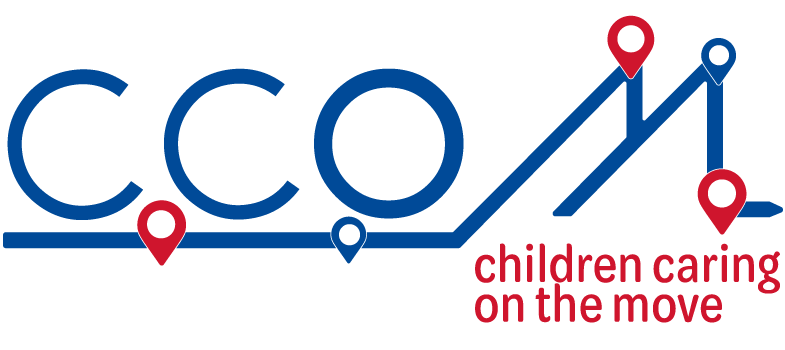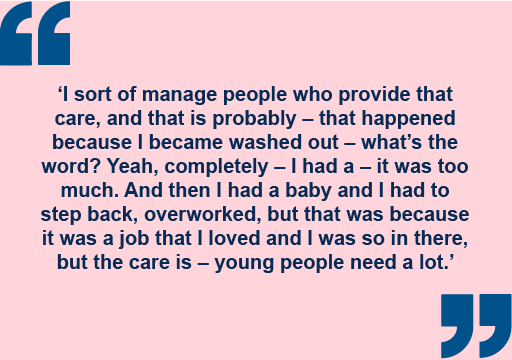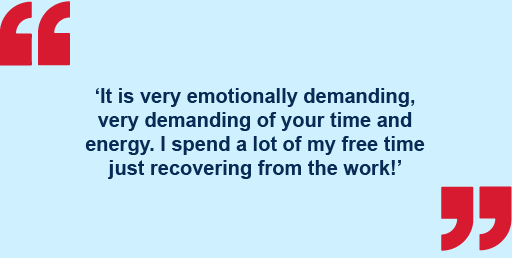2.2: Care, professional practice and emotions
 Pause for reflection: Maintaining a caring approach
Pause for reflection: Maintaining a caring approach
It is well understood that working with vulnerable unaccompanied child migrants can be a challenging and an oftentimes emotionally draining job.
What helps a practitioner to maintain a caring and empathetic approach in your work? What has helped you personally?
Make some notes in the box below.
The challenges of working on a daily basis with very vulnerable unaccompanied migrant children are well known – complex caseloads, challenging client situations (including emotional trauma and high volumes of work), and a lack of resources, all point to high emotional demands (Griffiths et al., 2019). Providing care for UASC young people often competes with other systemic, legal and professional demands. The sense of fatigue and burnout was present in our data from across a variety of sectors.
Ophelia, who worked in the education sector, told us how she moved from direct work with UASC to managing other people, something that was quite a common approach for managing the emotional challenges of these roles:
Charlie, who worked directly with young people within the charity sector told us:
Research studies with social workers working directly with young people suggest that an emotional commitment towards young people is the key to the most effective practice (Kohli, 2006). This is also very challenging because social workers in the same study also felt like they were sometimes the containers or conduits for traumatic stress. They described how ‘bearing witness’ can be very difficult. The literature also characterises the emotional toll as burnout syndrome, leading to exhaustion, cynicism, emotional distancing and depersonalisation or Secondary Trauma Stress (STS), in which repeated exposure to others’ trauma has an impact on emotions, behaviours, beliefs and values (Hadwin, 2022; Vîrgă et al., 2020).
Therefore, we know that care – when we look at it from the wider perspective as presented in the literature – has both practical and emotional entanglements that are often difficult and challenging for those working in practice (Milligan and Wiles, 2010). This is especially true for those working within a system and broader environment where the day-to-day pressures seem to work against being able to exercise care that can sit in conflict with the Corporate Parenting principles [Tip: hold Ctrl and click a link to open it in a new tab. (Hide tip)] . At the same time, young people can struggle to communicate and feel understood about their own care needs and life experiences. In addition, young people’s own caring relationships are often neglected or misunderstood. The reality is that social workers who work with Unaccompanied Asylum-Seeking Children (UASC) face many ethical dilemmas and conflicts of interests. On the one hand, building honest, trustful and supportive relationships whilst also complying with resource and asylum requirements (Wright, 2014).
 Activity 2.3: Thinking about emotions
Activity 2.3: Thinking about emotions
When you think about your work with UASC, what are the three emotions that spring to mind? You may find it easier to use similes to express yourself, for example, ‘Working with UASC is like…’
Make some notes in the box below.
2.1: Different approaches to care



